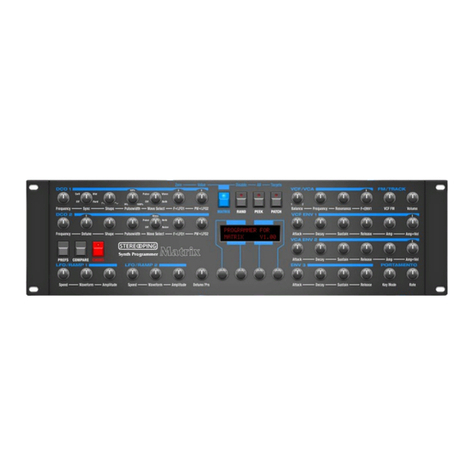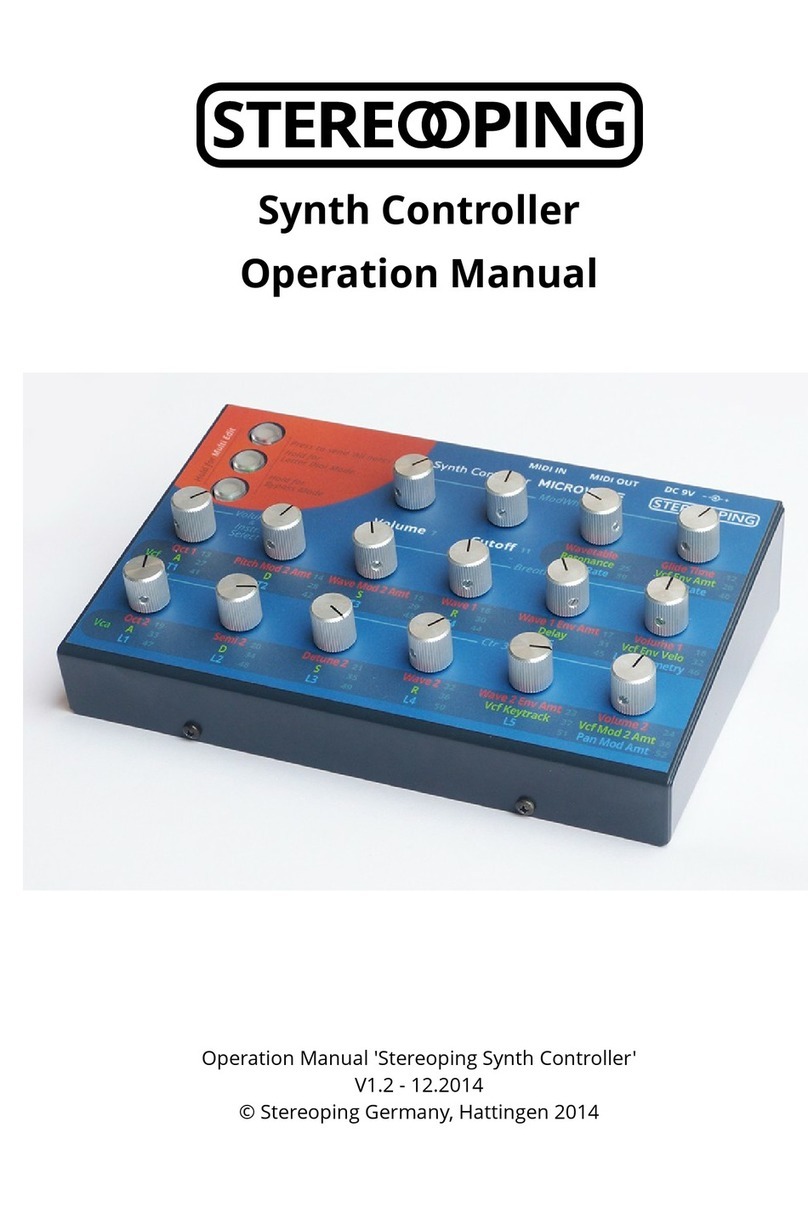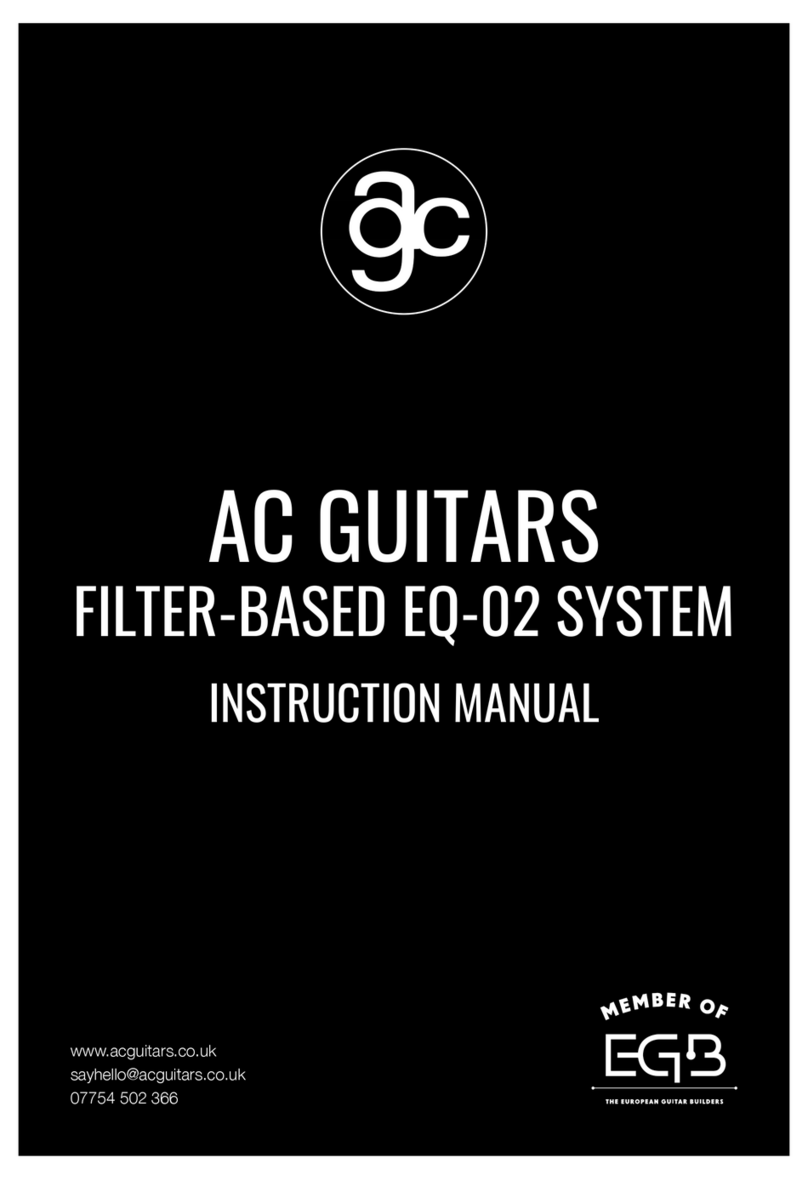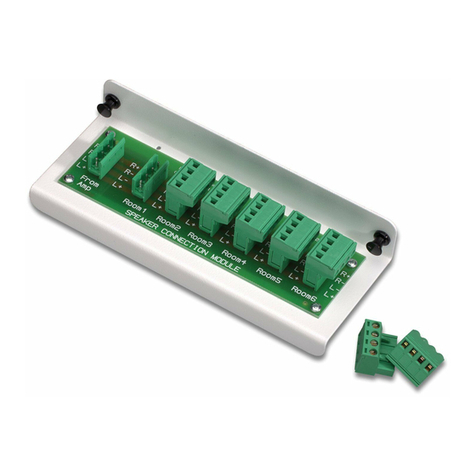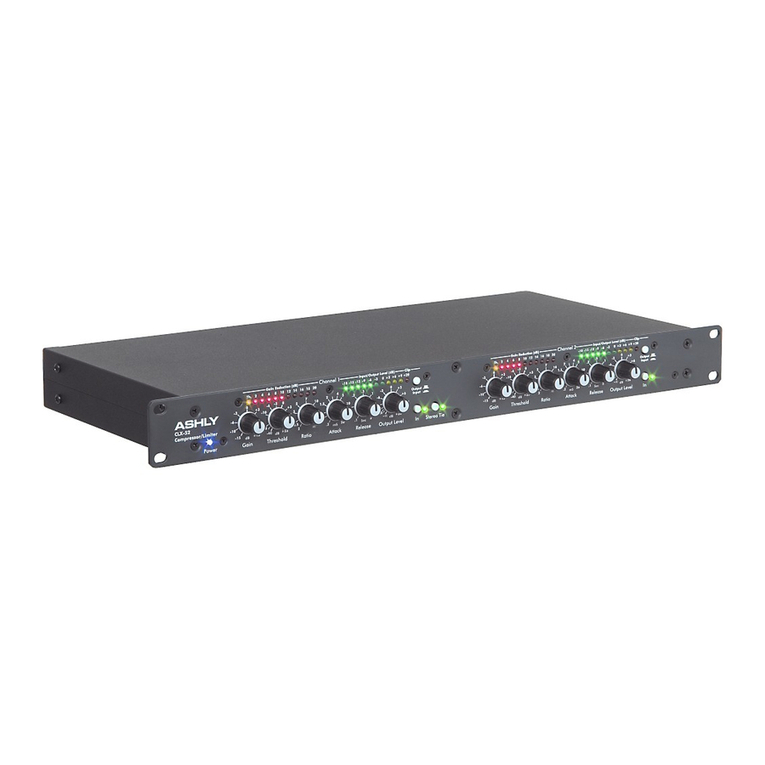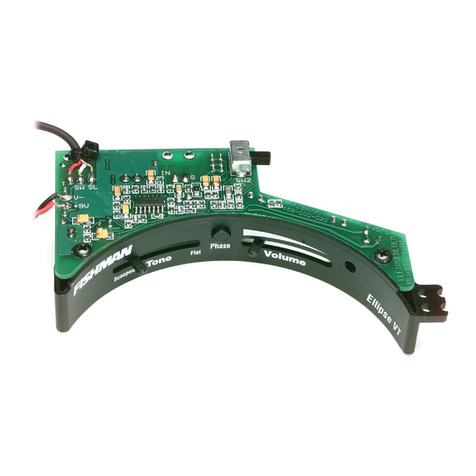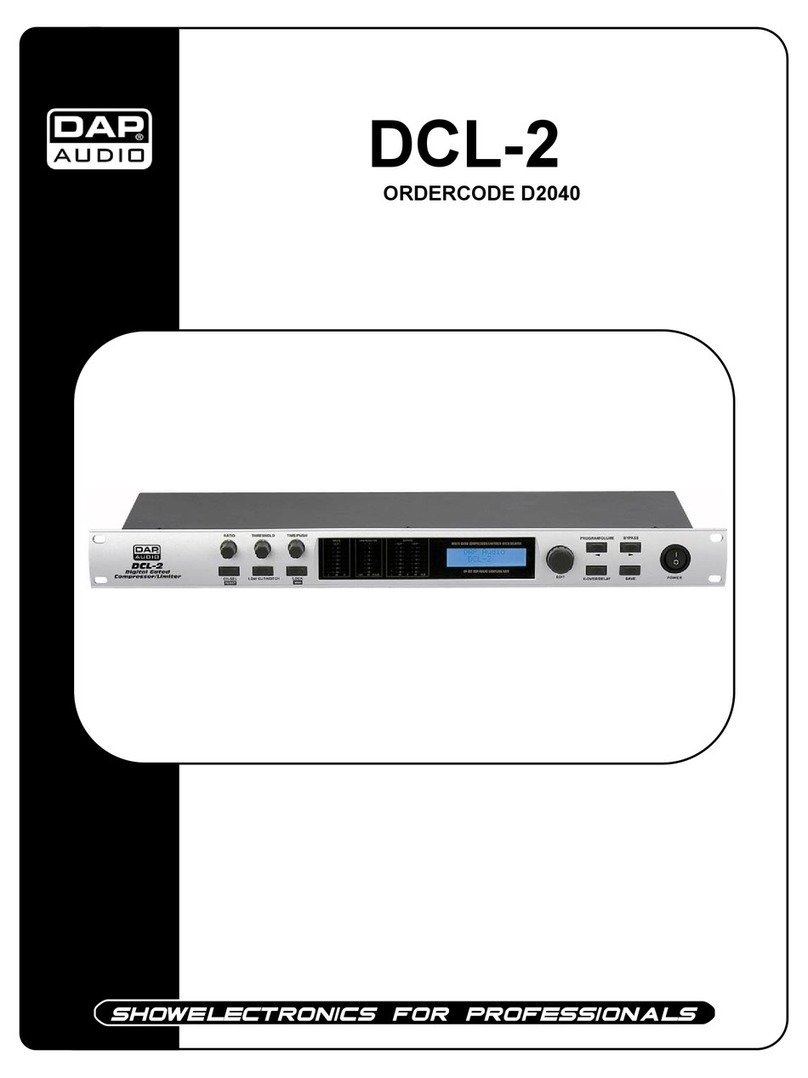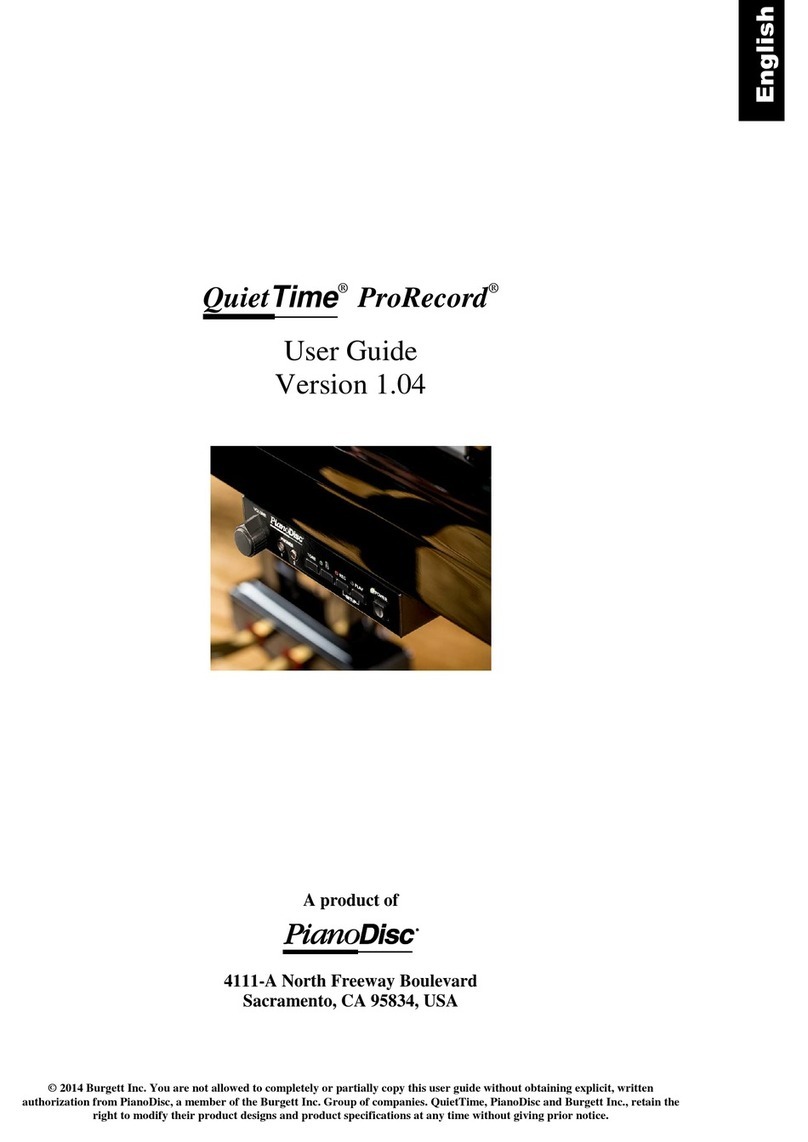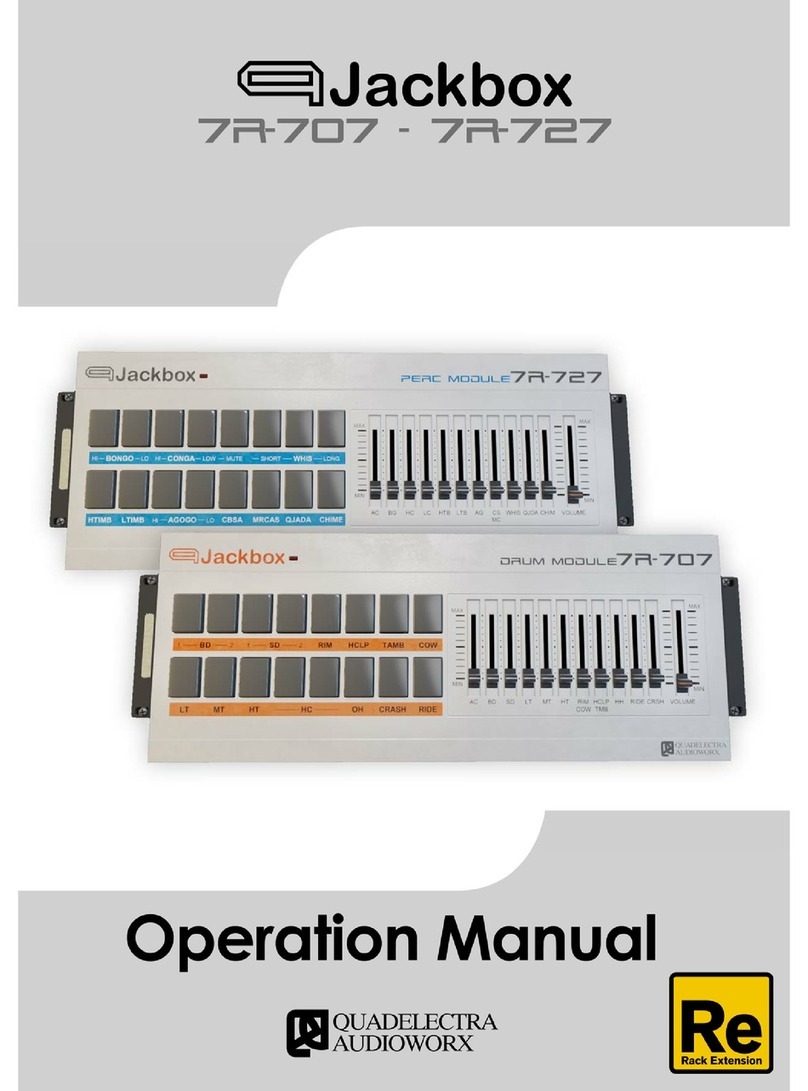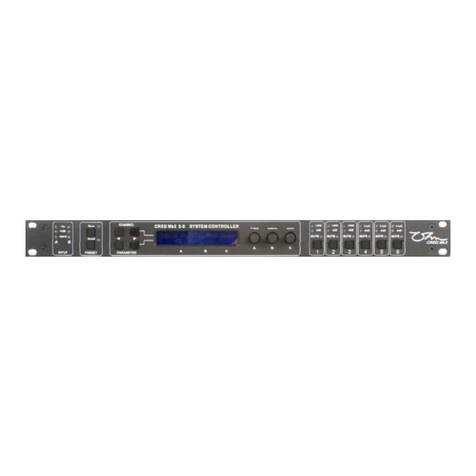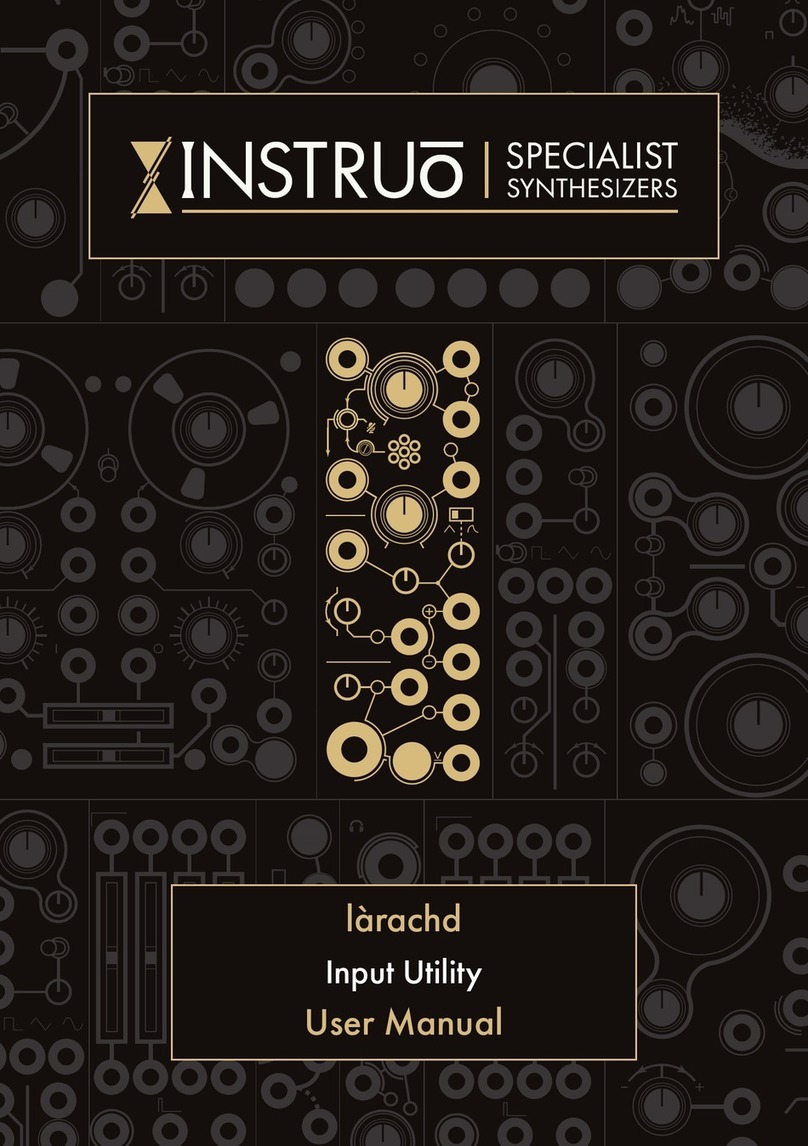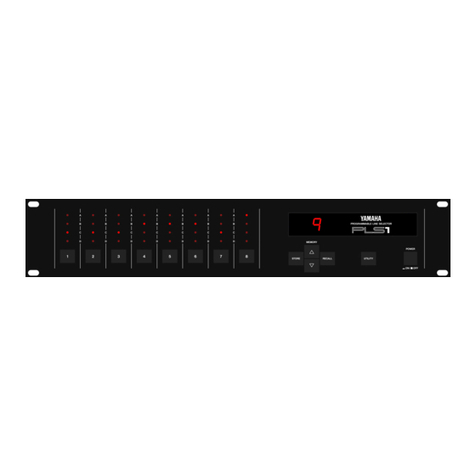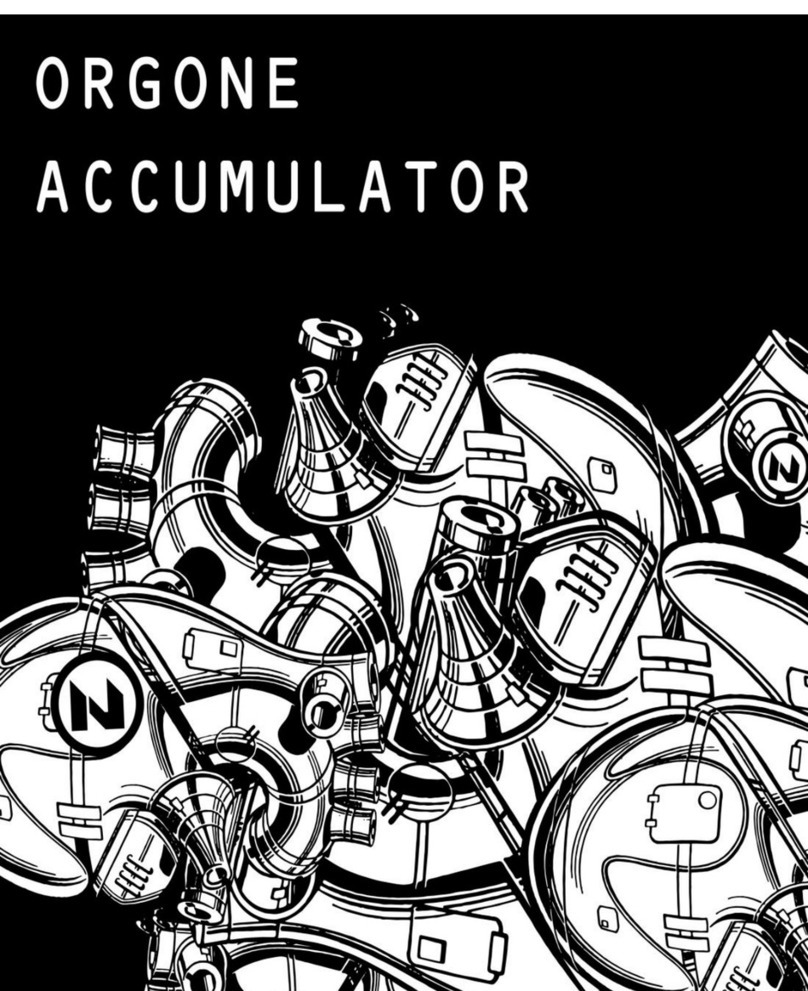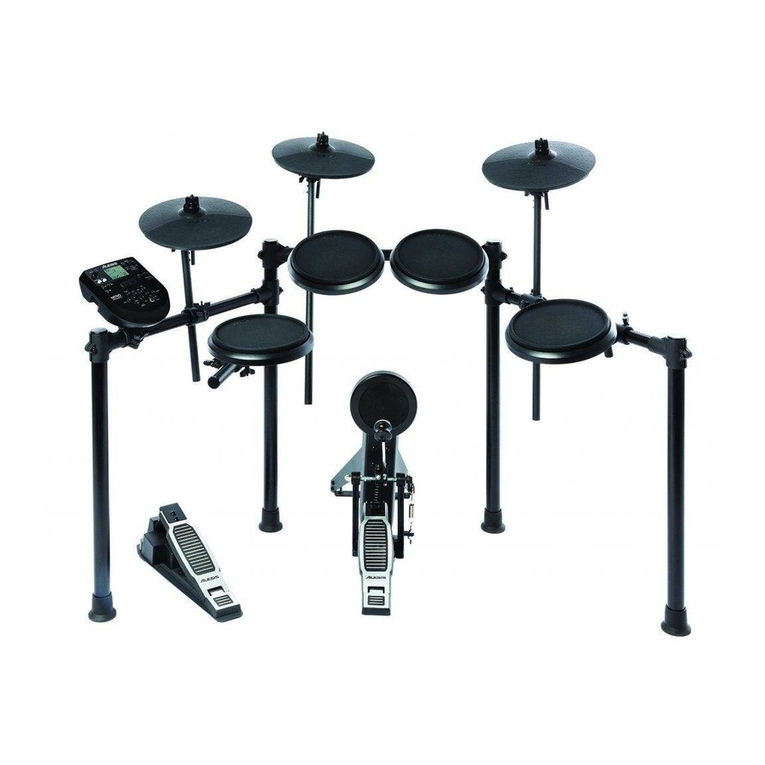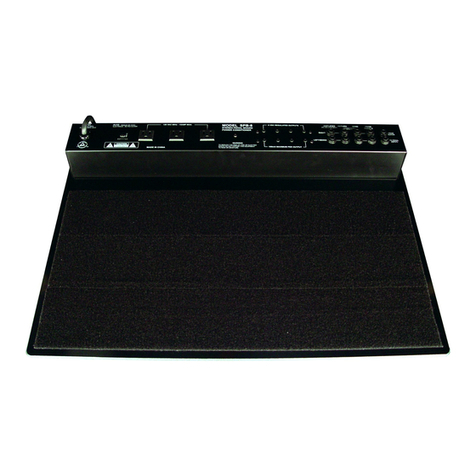Stereoping SPRING REVERB Instruction Manual

Eurorack Spring Reverb
Building instructions
Building instructions 'Eurorack Spring Reverb'
V1.0 - 06.2014
Stereoping Germany, Hattingen 2014

Hello
Hi and thank you for having chosen the Stereoping Eurorack Spring Reverb DIY assembly
kit. If you were looking for the manual you are unfortunately wrong here, this is the
building instructions for getting together the assembly kit. You can find the manual
here:
www.stereoping.com -> Products -> Spring Reverb
If you experience any problems in building this kit, are coming up with a genious
improvement feature, if you are missing something or simply are enoyed by
something, even if you just want to write us that you LOVE our product ...
go ahead. We are looking forward to receiving your Mail!
support@stereoping.com
This building instructions came out quite large because we don't want you to make
mistakes or experience any problems in building this module. The kit and the
instructions were developed very thoroughly and are verified multiple times. If you
follow the instructions, your module will work perfectly at once.
Nevertheless we can not be held responsible for any problems or damage caused by
the building or usage of this assembly kit. Nor can we replace or repair PCBs, parts or
complete kits, damaged or destroyed by inappropriate building or usage.
The instructions contain the following parts:
1. ontent of the kit
2. Building the kit
3. Putting into operation
4. Technical details
5. Imprint
Building instructions 'Eurorack Spring Reverb'
V1.0 - 06.2014
Stereoping Germany, Hattingen 2014

1. content of the kit
You should find the following parts in your package
Bill of material Spring Reverb
Resistors and their color coding
1x 220 Red-Red-Brown-Gold
2 x 1 k Brown-Schwarz-Red-Gold
4 x 2,7 k Red-Purple-Red-Gold
8 x 10 k Brown-Black-Orange-Gold
3 x 24 k Red-Yellow-Orange-Gold
1 x 33 k Orange-Orange-Orange-Gold
1x 82 k Grey-Red-Orange-Gold
2 x 100 k Brown-Black-Yellow-Gold
1x 150k Brown-Green-Yellow-Gold
Building instructions 'Eurorack Spring Reverb'
V1.0 - 06.2014
Stereoping Germany, Hattingen 2014

1 x 1 M Brown-Black-Green-Gold
1x Trimmer 500
Hint: 1k means 1 Kilo-Ohm or 1.000 Ohm. Ohm is the unit for electrical resistance.
1M means 1 Mega-Ohm which equals 1.000 Kilo-Ohm and 1.000.000 Ohm
Potentiometers and their label
1 x 10 k linear "103B"
1 x 10 k logarithmic "103A"
4 x 50 k linear "503B"
Capacitors
1x 100 p
1 x 220 p
2 x 1 n
1x 4,7 n
1x 6,8 n
1 x 10 n
1 x 33 n
2 x 100 n
1 x Elko 1µ
2 x Elko 2,2 µ
4 x Elko 10 µ
1 x Elko 33 µ
Hint: 1µ means 1 Mycro-Farad or 0,000.001 Farad. Farad is the unit for electrical
capacity. 1n means 1 Nano-Farad or 0,001 µF. 1p equals 0,001 nF which is the same as
0,000.000.000.001 F, which in fact is very very small.
Semiconductors
1 x IC NE5532 operational amplifier
1 x IC TL072 operational amplifier
1 x IC TL084 operational amplifier
Others
2 x IC-Socket 8pin
1 x IC-Socket 14pin
2 x 3.5mm jack
2 x Cinch jack
1 x pinhead 16 pin
1 x Printed circuit board (PCB)
1 x Frontpanel
2 x Metal sleeve 10mm
Building instructions 'Eurorack Spring Reverb'
V1.0 - 06.2014
Stereoping Germany, Hattingen 2014

8 x Threaded screw M3 / 6 mm
6 x Polyamid disc, for protecting your frontpanel against scratches
1 x Power-connector cable for Eurorack-Power-Bus
2. Building the kit
Before we start ...
This building instruction assumes you are familiar with soldering. If you are not, there
are lots of excellent tutorials on the web.
Assembly should be finished within an hour. Please take your time, enjoy the process
of building your module, concentrate on what you are doing. It happens quite fast to
mix up two parts or solder one on the wrong side of the pcb.
If you consider yourself to be a professional, you probably will not need this
building instructions. The following three points must be taken in consideration
even by professionals to ensure everything fits together in the end:
1. The jacks will not center themselves perfectly by just putting them in
their drilling holes. We must center the jacks with help of the frontpanel
BEFORE we solder them.
2. The power-pinhead and both golden cinch-jacks will be mounted on the
backside of the pcb
3. The distance between pcb and frontpanel is just 10 mm. We have to
ensure the parts are placed as flat as possible on the pcb. The wires of the
resistors should be bent directly near their bod
Building instructions 'Eurorack Spring Reverb'
V1.0 - 06.2014
Stereoping Germany, Hattingen 2014

Tools you will need
To build the kit you will need the following tools:
•solder iron or better a solder station with pencil tip (see photo)
•lead free or leaded solder (works perfect with both)
•a side cutter to cut the wires from the parts after having them soldered onto
the pcb
•a long nose plier for getting the rippled nuts onto the the jacks
•a multimeter to check the operation voltage before attaching the ICs
(Intergrated circuits)
•a philips screwdriver mid size for the screws to hold the frontpanel and pcb
together
Building instructions 'Eurorack Spring Reverb'
V1.0 - 06.2014
Stereoping Germany, Hattingen 2014

Let's get started
After comparing the bill of material with the content of your package we can start with
the assembly. The order is arbitrary. We start with the complicated parts first as long
as your concentration is charged.
The pcb has a white silkscreen side. This is the side we put the parts on - with
exception of the power-pinhead and the cinch jacks. The pcb should be lying in front
of you with the pinhead in the lower right. This is the relevant pcb-orientation when
we talk about something like "diode in the upper right corner of the pcb".
Building instructions 'Eurorack Spring Reverb'
V1.0 - 06.2014
Stereoping Germany, Hattingen 2014

IC-sockets
Let's start with the sockets for the ICs. Starting to solder their many legs will help us to
get a feeling for the pcb's behaviour together with your soldering equipment. The
Spring Reverb has 3 IC-sockets - two with 8 legs and one with 14 legs. They have a
small notch on one of it's shorter sides. The notch tells you where to put the side of
the IC with pin 1, which is quite important. A wrongly attached IC gets a wrong power
supply which might destroy the IC. Some ICs have a notch, others have a small circular
indentation on the top of the body on one of the shorter sides.
This notch must match the printed outline of the socket on the pcb (see picture). Start
by just soldering one leg in a corner.
Building instructions 'Eurorack Spring Reverb'
V1.0 - 06.2014
Stereoping Germany, Hattingen 2014

Have a look from all sides and check that the IC is lying perfectly flat on the pcb, Then
solder the other legs.
Power-pinhead
IMPORTANT! The pinhead is soldered on the backside of the pcb which is the side
without silkscreen where we normaly solder the parts. Put the pinhead with it's short
legs ahead onto the pcb and solder it from the silkscreened side.
Building instructions 'Eurorack Spring Reverb'
V1.0 - 06.2014
Stereoping Germany, Hattingen 2014

Jacks - the most difficult part
The jacks allow some movement inside their
drilling holes. If we just soldered them right
away, we would most probably get into
trouble with the frontpanel not fitting
perfectly to the jacks positions. We must
center the jacks with the frontpanel before
soldering them.
Attention, the jacks wires have sharp edges!
Start by screwing the two 10mm metal
sleeves onto the pcb without using the
polyamid discs. The discs are for protecting
your frontpanel against scratches later.
Put all the jacks onto the pcb (first pic to the
right) - do not solder them yet! The contact
might have beed bend a bit to ensure the
jacks to slip into position.
Put the frontpanel over the jacks and add two
of the screws (now with polyamid discs) above
and below the EQ-drilling holes to clamp pcb
and frontpanel together - now your jacks are
neatly centered.
You can use your forefinger and thumb to
press pcb and frontpanel together helping to
press the jacks further in their pcb-holes. Turn
the whole thing upside down. The pins of the
jacks should look like in the lower photo to
the right. Now solder the jacks and remove
the frontpanel to continue adding the rest of
the parts.
Building instructions 'Eurorack Spring Reverb'
V1.0 - 06.2014
Stereoping Germany, Hattingen 2014

Resistors
Note about resistor R : by default resistor R4 has a value of 1M Ohm for working
together with tanks of low input impedance. Such tanks have an "A" or "B" in their
typecode (e.g. "4AB2A30") printed on their body (see our product site for a decoding
help). For tanks with a higher impedance (e.g. "8FB2D1B" printed on) it is better to
solder a 100k resistor instead of 1M. We supplied both in the kit, so in the end you will
have one resistor left over. If you do not know the impedance of your tank: do you like
clean reverb sound? Use the 100k. You prefer crazy distortions? Then go for the 1M
resistor. The module will work with both values.
Lets continue with the resistors. Each position for a resistor is marked on the
silkscreen with a "R", the symbol is a line connecting two drilling holes.
The value for each resistor is color coded, you
find the appropriate color code in the bill of
material. Grab the 220 Ohm resistor with it's
colors Red-Red-Brown-Gold. Now find the
place on the pcb saying "R25 220", meaning
"put a resistor in here with the value 220
ohm". It is in the middle on top between the
two cinch jacks and the IC-socket.
Sharply bend it's leg by 180° directly at the
body, put it in it's drilling holes until it's body
hits the pcb like in the pic to the right.
Now bend both legs on the backside a bit to
prevent slipping it out of the drilling holes. You
can solder it now or add some other resistors
first. After soldering, use the side cutter to cut
the wires directly above the solder.
Building instructions 'Eurorack Spring Reverb'
V1.0 - 06.2014
Stereoping Germany, Hattingen 2014

Capacitors
Capacitors are marked on the silkscreen with a "C", the symbol is two vertical lines in a
rectangle, elkos have the 2 lines in a circle with the addition of a "+". "Elkos" (short for
Elektrolyt-capacitor) are the bigger, cylindrical capacitors and must be put in the right
direction on the pcb, they have a Plus and a Minus end. More on that later.
The ordinary capacitors without polarization are smaller, we start with them. These
are the values:
Like you already did with the resistors, you
can help yourself here in the same way by
bending the small legs of the capacitors to
prevent them from slipping out of the
drillings while turning the pcb upside down
for soldering.
Building instructions 'Eurorack Spring Reverb'
V1.0 - 06.2014
Stereoping Germany, Hattingen 2014

Now on to the cylindrical Elektrolyt-Capacitors. Their "Minus" end is marked by a white
or gold stripe with some printed minus-signs. In addition, the Plus end has a longer
wire. So you should keep an eye to put the long leg in the drilling hole with the small
"+".
We got 7 small Elkos looking the same at the first glance. Having a closer look reveils
their values printed on their body: 1µ, 2.2µ and 10 µ. These values you will also find in
the silkscreen. So you can add them now. Please remember, they want their longer leg
in the drilling hole marked with a "+". The big 33µ-Elko will be soldered at least. This is
the way, your pcb should look afterwards:
Building instructions 'Eurorack Spring Reverb'
V1.0 - 06.2014
Stereoping Germany, Hattingen 2014

Golden cinch jacks
Next are the two golden cinch jacks. These jacks
will connect the module with your reverb tank
later. We intentionally solder the jacks somehow
crooked to make it easier adding or removing
cables later. Of course you can solder them
perfectly straight if you prefer.
They will be added to the backside where the
power pinhead already resides. So plug a cinch
jack completely into its drilling and lift it's nose
up just before the point, when the first contact
starts to slip out of the hole. Hopefully the upper
pic will clear this step up a bit.
Now turn the pcb, it should look like the lower
pic to the right. The 3 pins in the front are fully
pressed through the drilling, the single pin in the
background just a bit. Now solder the jack with a
lot of solder. The jacks must withstand some
mechanical forces later.
Building instructions 'Eurorack Spring Reverb'
V1.0 - 06.2014
Stereoping Germany, Hattingen 2014

33µ-Elko
There should still be the big elko "C2" with
the value of 33µF on your workbench. It will
be soldered now. It's body is to long to stand
vertical like the other parts.
This is the reason, we must solder it while
having it standing out of it's drilling for about
1 cm (~0.4 inches). It's wires are long enough
this way, to be bent and allow the elko to lie
flat on the pcb as you can see in the lowest
pic.
If you prefer, you perfectly can bend it FIRST
and solder AFTERWARDS.
Keep an eye on the right polarisation, the
golden stripe is the minus-end and should
point towards the eq-pots.
Building instructions 'Eurorack Spring Reverb'
V1.0 - 06.2014
Stereoping Germany, Hattingen 2014

Potentiometers
At least we can put the pots on the pcb. There are 3 different types:
Logarithmic potentiometers are better suited for adjusting audiolevels, their relation
between rotation angle and resistance is matched to suit the characteristics of the
hearing.
The 10k log-pot with the label saying "103A" will be put to the silkscreen print saying
"SEND_LEVEL".
The 10k lin-pot with the label "103B" will go to "DRY-WET".
The remaining 4 pots are identical 50k-lin-types used for the 4 band equalizer.
Please do not solder them yet, just put them into position! There might be some force
necessary for the metal clamps to snap into their dilling holes on the pcb. Try to grab
the pot on it's base and wiggle it into position with slight left-right-movements. Try to
not holding it on it's axis or pressing directly from above.
Everthing up to this point worked well? GREAT!
Now there is is still one thing which can go awfully wrong. If you won't pay
attention here, one or more pots could be soldered crooked! Have a deep breath and
try to concentrate on this last important step. We definately MUST ensure, the pots
are sitting in position on both of it's sides before we solder them. What can happen in
Building instructions 'Eurorack Spring Reverb'
V1.0 - 06.2014
Stereoping Germany, Hattingen 2014

the luckiest case of a crooked pot can be seen on the pic below. It's axis scrapes the
frontplate, making the pot to turn harder than the others. In even worse scenarios the
frontplate will not make it over the pots at all.
The pics above show you how to do it (green) and what mistakes you should have a
look for (red).
Building instructions 'Eurorack Spring Reverb'
V1.0 - 06.2014
Stereoping Germany, Hattingen 2014

This photo showns another module but the principles are the same. If you look
straight from above through the pot-row, all axis should match in a row. Before you
solder the pots, please check multiple times thoroughly that
•all pots are in a row
•all pot-bodies are lying flat on the pcb
•all metal clamps are snapped in perfectly
First solder one or more pins and check AGAIN from all sides. It might help to attach
the frontplate to have an overall look. If you are perfectly sure all pots are straight,
solder the metal clamps to give the pots a mechanical strength and do not be stingy
with solder.
All parts should have found their places on the pcb now and in front of you there are
just 3 ICs remaining (apart from the redundant resistor R4). Time to get the module
into operation.
Building instructions 'Eurorack Spring Reverb'
V1.0 - 06.2014
Stereoping Germany, Hattingen 2014

3. First time operation
Let us check the operation voltage before putting the ICs into place. First switch off
power supply of your module system. The power connector is compatible to
eurorack-/doepfer standard as you can see in the following pic.
Attach the power-cable like on other
eurorack modules with the red wire pointing
to the bottom of the module.
Building instructions 'Eurorack Spring Reverb'
V1.0 - 06.2014
Stereoping Germany, Hattingen 2014

Now put the other end to your module
systems power bus. Go sure to have the red
wire bottomside.
Switch on the power supply.
Grab your multimeter and check the voltages like in the following photo. You can get
Ground on any of the pots metal clamps.
Building instructions 'Eurorack Spring Reverb'
V1.0 - 06.2014
Stereoping Germany, Hattingen 2014
Other manuals for SPRING REVERB
1
Table of contents
Other Stereoping Music Equipment manuals

